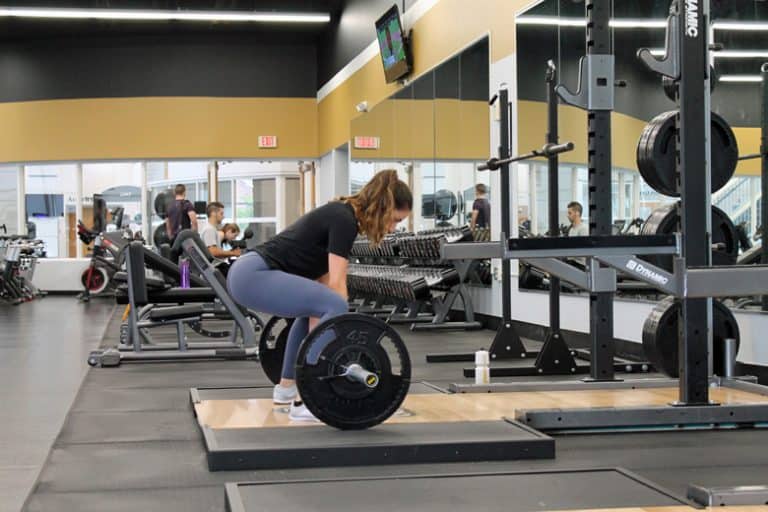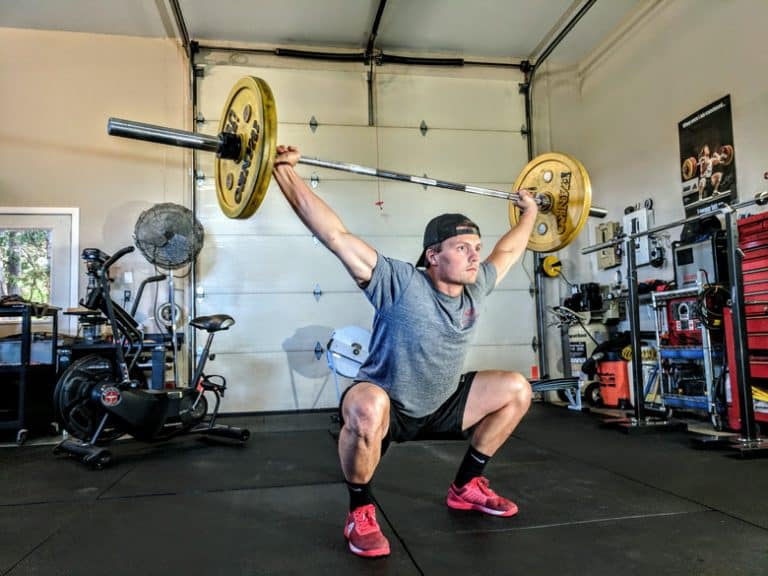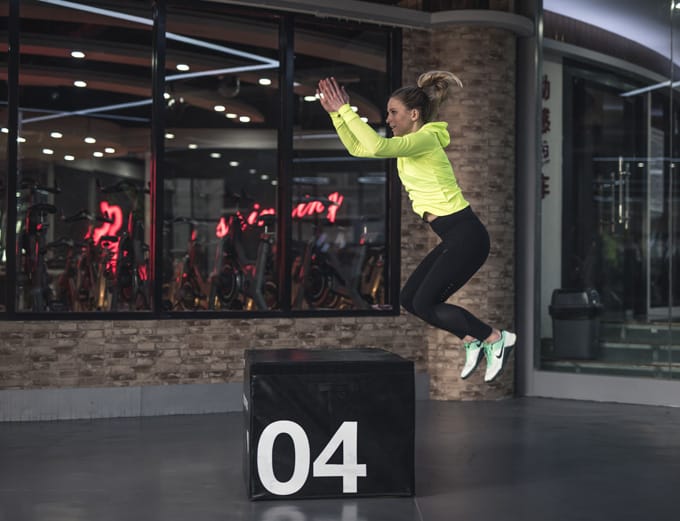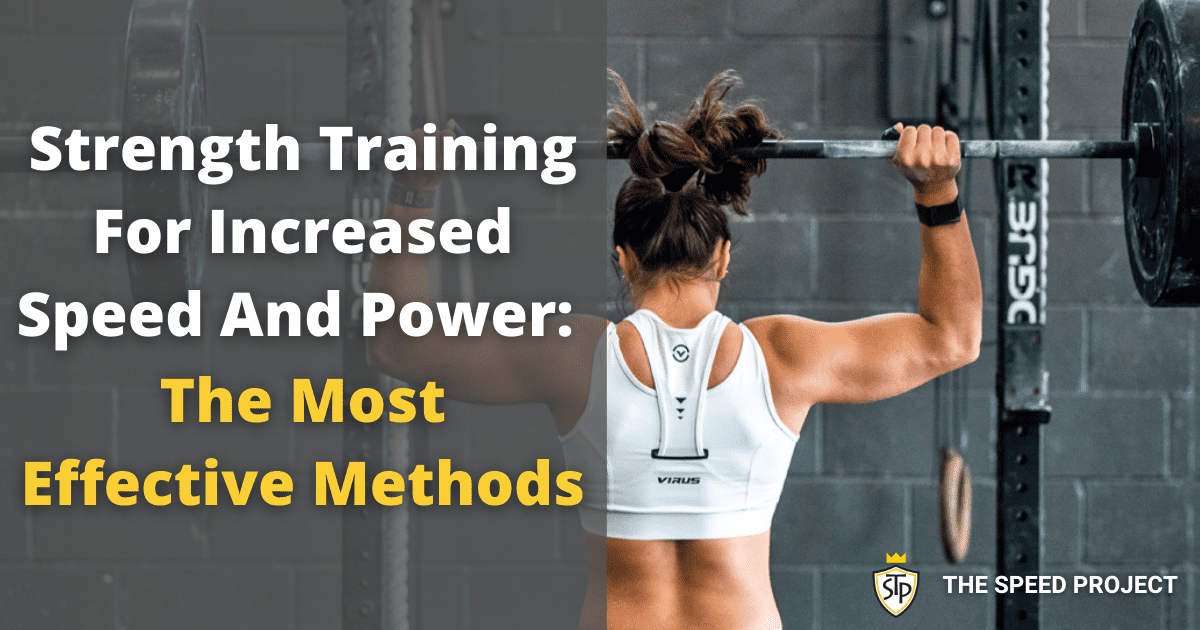Speed and strength training is a topic that I always get questions about. The component of speed is an ability that the majority of athletes across all types of sports would love to possess as it can highly enhance sporting performance.
Therefore it’s important to understand what training methods you can use that allow for the optimal adaptation of speed. In this article, we will look at different types of strength training, why each type is beneficial, as well as some example exercises to increase speed.
Unlock your sprinting potential with expert tips, training strategies, and performance insights delivered weekly.
Article Overview
- The 3 types of strength training and the best exercises for speed
- How and when to implement maximum, explosive and reactive strength training
- Benefits of plyometric training
- Sample training programs for each strength type
Athlete Training Age
Athletes with varying levels of experience are unlikely to benefit from doing the same training. The appropriate training for a beginner may seem tedious for the more experienced athlete. It’s also unlikely to cause enough stress to produce positive adaptations.
Likewise, a beginner would run the risk of negative overtraining and injury if they performed a workout that was too advanced.
When we speak about an athlete’s training age, we are not referring to the age of the athlete, but rather how long the athlete has been training for. So if we had an athlete that started training at the age of 18 and they are now 21, then their training age is three years.
Thus, a younger athlete has a higher training age than another athlete who is older in years. The determining factor is the level of experience.
When designing a strength training program, the athlete’s actual age is still important. Both factors (training age and actual age) are a consideration when selecting the exercise frequency, intensity, time and type.
Training Age | Time Training (In Years) |
| Beginner | Less than 1 year |
| Intermediate | Between 1 and 3 years |
| Advanced | More than 3 years |
Types Of Strength Training
There are 3 types of strength training that can help increase your speed development. Here I will go over the different methods and explain how and when to implement them into your training.
Note: Be aware that it is important to assess athletes based on their individual needs. Everything written here is only to be used as guidelines to help you organise your strength training more efficiently. Specific exercises can be used during any part of the season if there is a requirement for it!
Maximum Strength Training
Maximum strength training increases relative strength and is what I like to call the athletes ‘base strength’. This type of training is usually carried out preseason or during the early stages of a season. I use it as my athlete’s first strength training phase during the preseason.
Note: Those new to resistance training should start with a maximum strength training program. This is regardless of what stage you are at in your annual season. You should be able to perform technically sound max strength exercises such as the Squat and Deadlift before moving forward.
Max strength training involves working at submaximal efforts. This helps prepare the body for higher intensity training later on in the season by developing muscle and connective tissue tolerance.

The length of this period of training will vary depending on your training age (see table above). Advanced athletes are unlikely to spend a long period of time performing maximum strength exercises. They will already have a good level of strength, so will transfer their focus sooner to exercises with more sport specific transfer.
If you are a beginner, then this stage is often longer as you need more time to develop your base strength.
Maximum strength training has no specific sport carryover, with the focus being on neural adaptations. It’s highly associated with hypertrophic gains and will prepare an athlete for more explosive work.
The advantageous effect of this may depend on your sport. For example, a rugby player may wish to increase their mass, however, a 200m sprinter will want to stay lean. (If a sprinter comes in a bit heavy after this stage, we usually spend some time adjusting this in the next phase).
The type of exercise that you need to include during this phase is multi-joint, compound movements. When performing an exercise, you should focus on keeping the eccentric phase of the lift slow and controlled.
The concentric phase of the lift should be performed quicker and with force! This is the most favourable to the rate of force development. As you begin to improve and develop good structural balance, look to increase the weight used for each exercise.
It’s also important to make sure you perform all exercises with a good technique and in a safe manner. Never compensate form so that you can increase the weight!
Examples of Maximum Strength Training Exercises:
- Back Squat
- Front Squat
- Deadlift
- Nordic Curls
- Lunge
- SB Hamstring Curls
Explosive Strength Training
To improve your sprinting ability or speed, it’s important to focus on applying force rapidly, rather than focusing on the maximum amount of force that you can apply.
During this stage, athletes are able to improve their power production by using explosive movements under heavy loads. Due to the heavy loads moved at high speed, this type of training facilitates a higher threshold of motor units.
Sprinters often use explosive training as it requires the athlete to perform accelerated actions. These types of exercises require the athlete to continue accelerating throughout the movement until the point of release or take off.

Explosive exercises have a higher degree of muscle activation, concentric velocity, force and power than maximum strength exercises.
They are also technically more demanding, so it’s even more important that you’re able to perform them correctly to avoid injury. I recommend getting a coach to evaluate your technique or filming yourself so that you can check your form.
Examples of Explosive Strength Training Exercises:
- Power Clean
- Snatch
- Squat Jump
- Med Ball Toss
- Box Jump
- Standing Long Jump
Reactive Strength Training
Reactive strength sessions emphasise movements and exercises that most closely resemble sprinting. Here the focus is on minimal ground contact time whilst exerting the maximum amount of force in the minimum amount of time. These exercises will have the highest carryover into your sprinting performances on the track, field or court.
The goal here is to try and mimic the force-velocity and movement pattern characteristics of sprinting. We can achieve this by using training aids such as weighted vests, sleds and medicine balls.
Strength training for sprinters may have some variation to other sports regarding when this type of training is introduced. We introduce reactive strength into our training sessions later in the season (closer to competition). It actually crosses over with our explosive training. At this point, we’ll be performing very few, if any, maximum strength training sessions.
Here’s a look at what that may look like over a week.
Mon: Explosive strength training, Tue: Speed endurance, Thurs: Reactive strength training, Sat: Tempo runs.
Plyometric Training
One great way to utilise reactive strength training is through the use of plyometric drills. Plyometrics are a fantastic way to increase your power and reactiveness. The drills we do mostly involve performing explosive bodyweight jumping and bounding exercises.

However, plyometric training is usually performed at high intensities and is not always suitable for an athlete. Suitability may depend on training age, ability and fitness levels. There are of course lower intensity exercises that can be performed as an introduction to plyometrics for beginners.
Some plyometric exercises can be extremely stressful on the nervous and skeletal system. Such exercises should only be performed by well-conditioned athletes. It’s important that you select the correct type of exercises for your ability level and strength.
When performing plyometric exercises:
- You only want to produce high-quality reps, performed with maximal effort. If the quality of the reps diminishes then stop with the sets.
- Perform maximal effort/explosive movements.
- Make sure exercises are performed to allow for minimum contact time with the ground.
- Be aware that these exercises can be highly demanding. Bounding and jumping exercises can be especially stressful for your shins.
- Make sure you perform plyometric exercises on a soft surface (a spring floor or grass work well). Just make sure the ground is not too hard.
Examples Of Reactive Strength Training Exercises:
- Ankiling
- Low hurdle jumps with bounce
- Hops
- Sprint bounding
- Vest sprints
- Sled sprints
How Often Should You Perform Strength Training?
This really depends on your individual needs as an athlete. This is always the first thing that any athletes or coaches should look into before designing a strength program. Remember that strength training doesn’t necessarily involve lifting weights!
As a basic guideline, I would suggest performing 1-2 strength training sessions a week. Depending on how often you are able to train, you may want to do a strength training session after your sport-specific training, later in the day.
Note: Perform speed training before any maximal and explosive strength training where speed is the main goal. Don’t perform sprints with any high-intensity reactive strength sessions on the same day. This can lead to over fatiguing and injury.
To give an idea, let me show you a basic version of what our 100m/200m athlete strength training set up looks like.
During pre-season: We perform 2-3 strength sessions a week. We focus mainly on maximum strength exercises during this phase.
Early season: We perform 2 strength sessions a week. We have one dedicated weights room session and the other is usually a circuit based session where we use a variety of exercises to build strength
Early-Mid season: We use a combination of explosive and reactive strength training sessions. As we approach our competition phase we don’t want to perform any strength exercises that will be overly fatiguing on the body.
Competition phase: During the week of competition, we usually perform 1 strength training session (explosive or reactive). This is at a high intensity, but shorter duration than usual, in accordance with our tapering plan. For example, if we have a big meet (Regionals/Nationals) at the weekend, then we will perform our weights session that week on Monday or Tuesday.
Workouts to Increase Speed
Here are some strength training workout templates to give you an idea of what a full session may look like.
Maximum Strength Workout
Exercise | Set | Rep | Rest | Intensity |
| BB Back Squat | 4 | 6-8 | 2 minutes | 8 RM |
| BB Bench Press | 4 | 6-8 | 2 minutes | 8 RM |
| Deadlift | 4 | 6-8 | 2 minutes | 8 RM |
| Pull Up | 4 | 6-8 | 2 minutes | 8 RM |
| Military Press | 4 | 6-8 | 2 minutes | 8 RM |
Explosive Strength Workout
Exercise | Sets | Reps | Rest | Intensity |
| Power Clean | 3 | 3-4 | 3 minutes | 70% 1 RM |
| Snatch | 4 | 5 | 2 minutes | 7 RM |
| Squat Jump | 4 | 5 | 2 minutes | 5% BW |
| Med Ball Toss | 4 | 6 | 2 minutes | 10 Kg |
| Plank | 4 | 1 minute holds | 1 minute | BW |
Reactive Strength Workout
Exercise | Sets | Reps | Rest | Intensity |
| Box to Box Depth Jumps | 3 | 6 | 2 minutes | BW |
| Sled Sprints | 6 | 2 | 6 minutes | 10% BW |
| Explosive Step-ups | 4 | 6 | 2 minutes | 5% BW |

